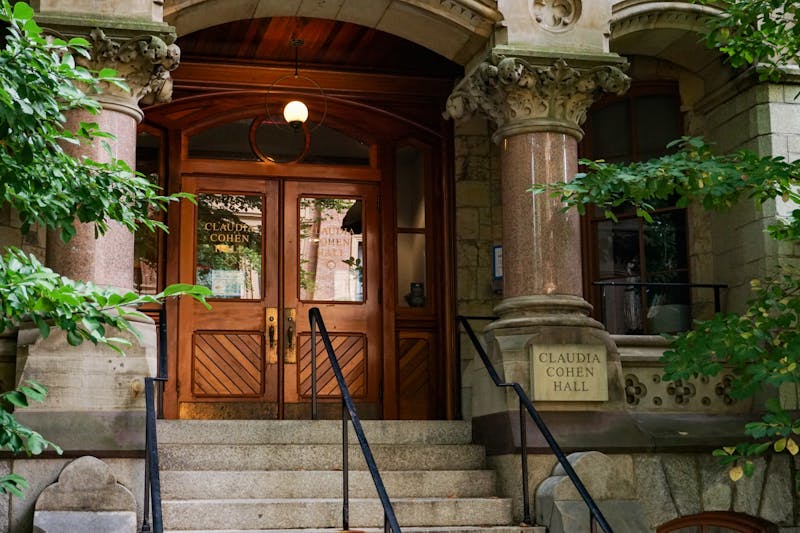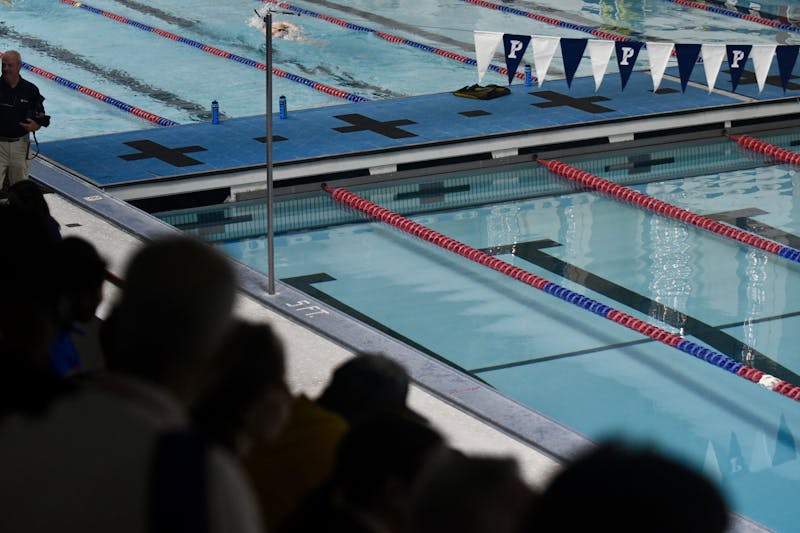
Penn has the largest international student population in the Ivy League , but foreign students don't always feel quite at home.
Every year, around three hundred international students leave their homes across seas, traveling to Penn while still on the brink of adulthood. This year, 14 percent of the freshman class comes from abroad.
College freshman Greta Lu went to a local high school in China. When she came to Penn, she struggled to adjust in the first few months. “I guess I’m just not used to the ways of communication and networking in the States,” Lu said. “I guess I’m just not that outgoing.”
College freshman Nopakit Lerthirunvibul attended an international high school in Thailand. Yet when he came to Penn, he still wasn't completely prepared. “We speak Thai English at school,” Lerthirunvibul said, “and people in Asian countries tend to be less outgoing than people in the States." He added that that it took him more time and effort to make friends in the States.
Departing from a familiar cultural environment also creates challenges. “I usually spent Lunar New Years with my family,” Lerthirunvibul said. “Though I Skyped with my family members during this year’s festival, I still miss them.”
Many international students share the experiences of Lu and Lerthirunvibual, facing challenges such as academic stress, language barriers and culture shock. The University has organizations including International Students and Scholar Services and student clubs such as the International Student Advisory Board and Assembly of International Students to help with the transition.
Yet, many international students say more can be done.
“ISSS organized a lot of workshops,” Lu said. “But I haven’t taken part in any of them yet. “
College senior Angel Garcia is from Mexico. As the past president of AIS, Garcia invested a great deal of time advocating for international students.
He mentioned that Penn’s need-based financial aid policy for international students creates huge financial burdens for his peers. “Penn provides financial aid to international students through programs such as Penn World Scholars,” Garcia said, “yet it’s only a small percentage of the whole population.”
Garcia also pointed out that Penn has no effective channels for alumni to donate funds specifically for the international student population. “We had a huge international alumni base, and they should be allowed to build funds for international students,” he said.
Wharton junior Alexandre Kleis, current president of AIS, said that the organization is dedicated to projecting the voices of international students to the administration. “It’s a huge step forward that the school administration listens to us. However, the administration’s reaction is missing,” he said.
Graduation rates reveal the challenges faced by international students. In 2008, the four-year graduation rate for international students was 73.9 percent, more than 10 percent lower than Penn's 86.7 percent rate for the total student body.
Kleis thinks the financial concerns are partially behind the gap. “Sometimes family situations change, and international students can’t resume their study because of the lack of available financial resources,” he said.
AIS also believes that International Student Orientation, a program held during New Student Orientation specifically for foreign students, might contribute to the graduation rate gap. Penn's ISO program lasts a day and a half, while peer institutions hold specialized programming spanning from four to six days.
“During ISO, international students aren’t exposed to various campus resources, and when problems arise, they don’t know where to ask for help,” Kleis said.
AIS hopes the administration can extend ISO to address those problems and is making an effort to build a cultural hub for international students. Despite the existence of various cultural centers such as PAACH and La Casa Latina, AIS hope to create a safe space specifically for Penn’s international student population, no matter where they come from.
“Organizations such as PAACH are also targeted towards Asian American students, and sometimes it’s hard for international students to identify with them,” Kleis said.
However, Kleis mentioned that AIS’s lack of funding creates huge obstacles in its mission. “We don’t even have the money to afford SEPTA tokens to send the first-year international students to Center City,” he said.
Fifth-year Engineering senior Erica Aduhis chair of the ISAB, a committee of international students dedicated to connecting the administration with students. Aduh proposed a slightly different measure in addressing the concerns of international students.
Aduh has her own perspective of how best to assimilate international students. “It’s more effective to actually integrate them through the community instead of providing a segregating hub for them," she said.
According to ISSS director Rudie Altamirano, ISSS has spent the last decades helping international students integrate into the American culture and creating a “home away from home."
“We are different from similar organizations in other schools,” Altamirano said. “Our philosophy is ‘beyond’ immigration.'"
He agreed that international students face many challenges while attending Penn. “It’s hard to balance academic and personal success and being able to integrate into the University,” Altamirano said.
ISSS has looked to increase engagement with the international student body by creating programs such as the International Partners Outreach Group and Intercultural Leadership Program over the past eight years.
“Partnership is also another key. We’ve paired with many other campus offices such as CAPS and the Provost’s Office to promote our agenda," Altamirano said. “We try to treat every student as a family member.”
Yet, he emphasized that results will only come with patience.
“It’s a process. Changes can’t happen overnight," Altamirano said. “It takes time for real changes to take place.”
The Daily Pennsylvanian is an independent, student-run newspaper. Please consider making a donation to support the coverage that shapes the University. Your generosity ensures a future of strong journalism at Penn.
DonatePlease note All comments are eligible for publication in The Daily Pennsylvanian.







